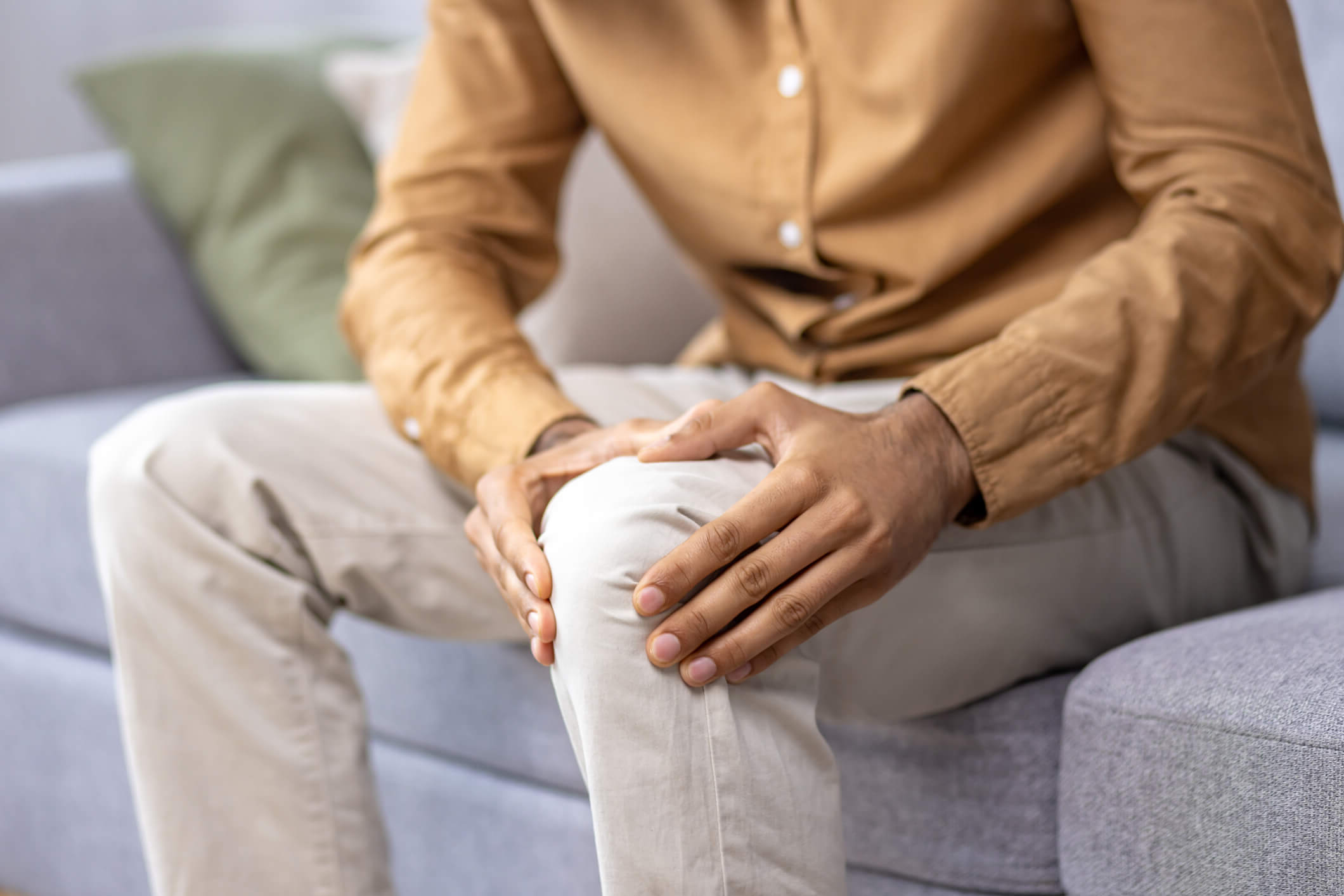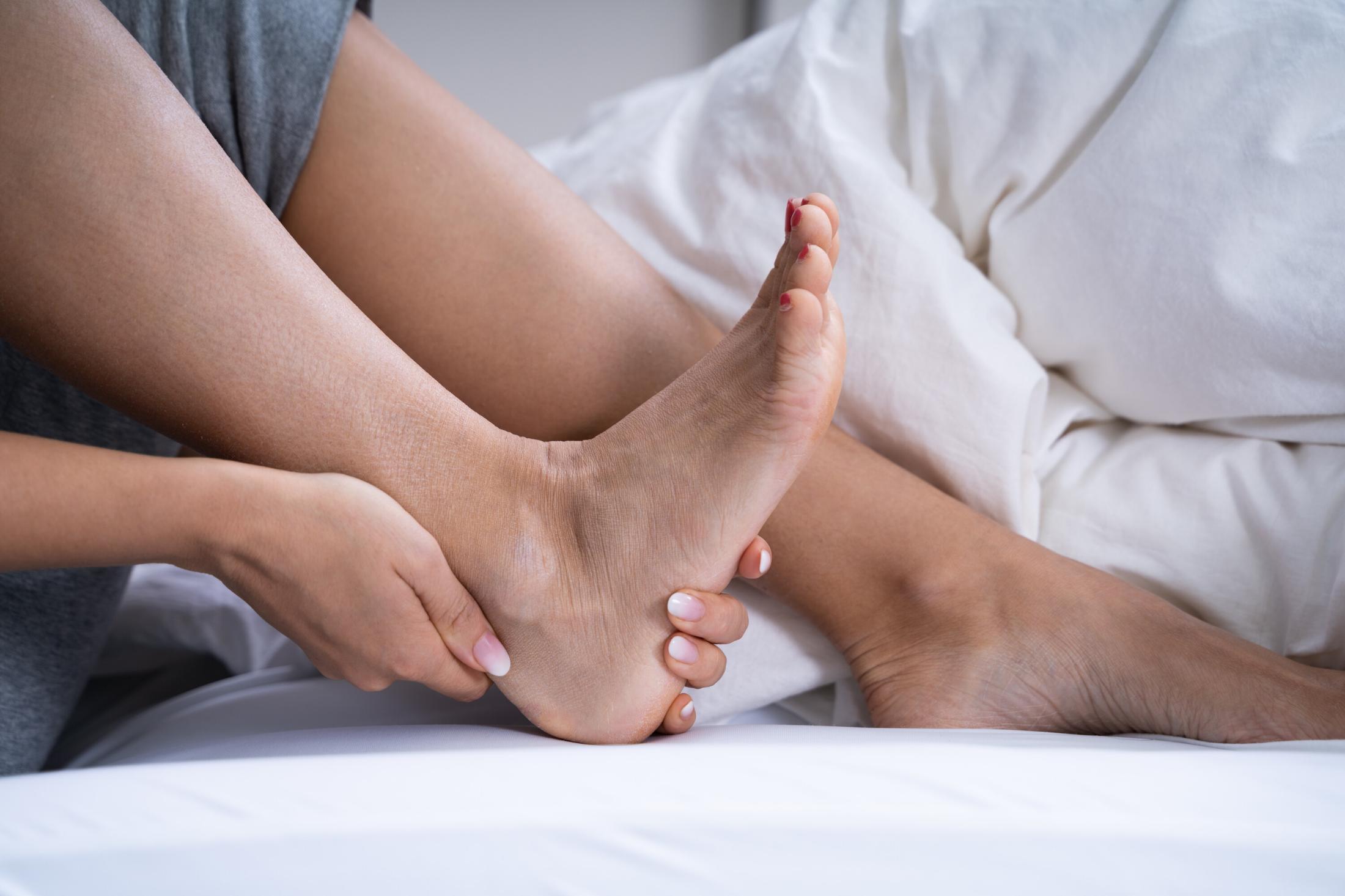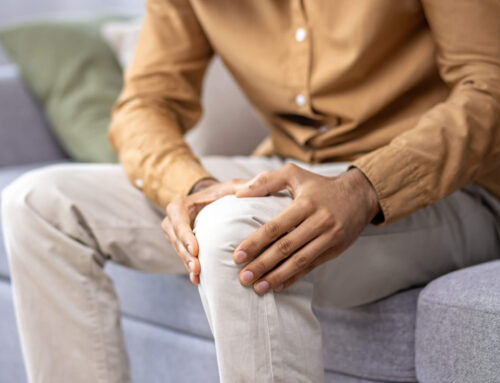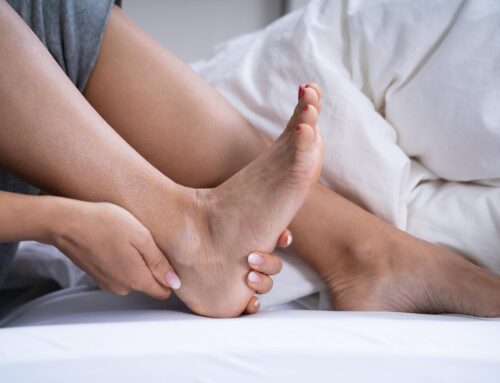If your legs or feet always seem to get colder as the temperature drops, you’re not imagining it. When the weather turns cold, your body works hard to keep vital organs warm by narrowing blood vessels in your hands, arms, and legs. It’s an efficient survival mechanism, but it also means less blood flow to your extremities, leaving your feet feeling chilled, heavy, or even a little numb.
That drop in circulation can do more than make you uncomfortable. It can lead to swelling, stiffness, or fatigue in your legs, especially if you spend long hours sitting at a desk, driving, or standing on your feet throughout the day. Over time, these small changes in blood flow can affect how your legs feel and function, making winter an especially challenging season for comfort and mobility.
Compression stockings aren’t just for post-surgery recovery or athletes anymore. They’re a simple, proactive way to keep your legs healthy and warm during the colder months. By supporting blood flow and reducing swelling, they help anyone, from office workers to active adults, stay comfortable, energized, and ready to take on winter.
Why Circulation Slows Down in Cold Weather
When temperatures drop, your body automatically shifts into protection mode. To conserve heat and keep your core organs warm, the small blood vessels in your hands, arms, and legs constrict. This process, known as vasoconstriction, helps prevent heat loss, but it also slows the flow of oxygen-rich blood to your extremities.
For many people, that means cold, tired, or heavy-feeling legs become a familiar part of winter. You might notice mild swelling at the end of the day, tingling after sitting too long, or a general sense that your feet “never quite warm up.” These are subtle signs of reduced circulation, something that can affect anyone, not just older adults or those with medical conditions.
Cold weather also tends to mean less movement. We spend more time indoors, sitting at desks or relaxing under blankets, which only adds to sluggish blood flow. Combine that with tighter winter footwear, thicker socks, and extra layers that slightly restrict movement, and it’s easy to see why circulation slows down during the colder months.
Compression stockings work with your body’s natural rhythm, applying gentle pressure that helps blood move upward toward the heart. By keeping circulation steady even when it’s cold outside, they can help reduce swelling, improve comfort, and keep your legs feeling light and warm through the season.
Supporting Circulation When the Temperature Drops
Compression socks & stockings might look simple, but there’s a lot of science woven into every thread. Unlike regular socks, they’re designed with graduated compression, meaning they’re snugger at the ankle and gradually looser toward the calf or thigh. This subtle change in pressure helps your veins push blood upward, counteracting gravity and keeping circulation moving smoothly.
When blood flow slows down, fluid can pool in the lower legs, leading to swelling, fatigue, and that heavy-legged feeling many people notice by the end of the day. Graduated compression gives your circulatory system a boost, helping veins return blood to the heart more efficiently and reducing the buildup of fluid in the tissues.
What’s often overlooked is how compression supports more than just veins. It also aids lymphatic flow, the part of your body’s system that removes waste and excess fluid. That means better circulation, less inflammation, and a lower risk of that dull, achy feeling that can set in during long periods of standing or sitting.
Modern compression stockings aren’t bulky or uncomfortable. Advances in microfibre and thermoregulating fabrics mean they can now provide warmth without overheating, wick away moisture, and feel soft enough for all-day wear.
Compression Support for the Cold Season
Winter is hard on your circulation, and not just because of the cold. Heavy boots, layered clothing, and less physical activity all work against healthy blood flow. Your legs and feet spend more time confined in thick socks and footwear that limit flexibility, while lower temperatures naturally cause blood vessels to constrict. It’s the perfect recipe for sluggish circulation, swelling, and that constant “cold feet” feeling.
Compression socks don’t just help with warmth, they actively support your circulatory system, making it easier for blood to return from your legs to your heart. Even mild compression can help prevent swelling, reduce fatigue, and maintain comfortable warmth throughout the day.
Winter also tends to highlight issues that are easy to overlook the rest of the year. Dry, itchy skin, for example, can sometimes be caused by poor circulation. By improving blood flow and oxygen delivery, compression stockings can help nourish the skin from the inside out, keeping your legs healthier through the cold, dry months.
And if you deal with conditions like Raynaud’s, varicose veins, edema, or diabetes, you may notice your symptoms worsen in winter. Gentle compression can provide daily relief, helping to manage discomfort and maintain better leg health between professional check-ups.
More Benefits Than You Might Expect
Most people think of compression stockings as a medical necessity or travel accessory, but their benefits go far beyond preventing swelling. In winter especially, the right pair can quietly make everyday life more comfortable, from morning routines to long workdays. Here are a few lesser-known advantages worth knowing:
Faster Muscle Recovery After Winter Activities
Walking through snow, shoveling the driveway, or spending an afternoon skating all require extra effort from the calves and ankles. Muscles work harder in cold conditions because blood flow slows down, which can lead to stiffness and next-day soreness. Compression stockings help reduce muscle vibration and inflammation, improving recovery and keeping legs feeling lighter.
The same technology athletes use to speed post-exercise recovery can help anyone stay more comfortable after everyday winter activity.
Warmth Without Bulk
Thick thermal socks may feel cozy at first, but they tend to trap moisture and limit airflow, which can make feet feel clammy and cold once the dampness sets in. Modern compression stockings are designed differently, they use advanced, moisture-wicking fibers and subtle insulation to regulate temperature naturally.
This combination keeps your legs warm and dry throughout the day, without the heaviness or tight squeeze of bulky winter layers.
Reduced Leg Swelling During Travel
Long drives, flights, and even extended train rides are common in winter, especially during the holidays, but sitting for long periods can slow circulation and cause swelling in the lower legs. Compression stockings help maintain steady blood flow, preventing fluid from pooling in the ankles and calves.
That gentle, continuous support can make a noticeable difference in how refreshed your legs feel after hours of travel.
Support for People Who Sit or Stand All Day
Extended hours at a desk, behind a counter, or on your feet can take a toll on your legs. Over time, limited movement causes blood to settle in the lower limbs, leading to fatigue, swelling, or that familiar heavy-leg feeling by the end of the day.
Compression stockings encourage healthy circulation and help reduce strain on the veins, making daily tasks more comfortable. During the winter months, when we tend to move less overall, that added support becomes even more valuable.
Healthier Skin and Reduced Itchiness
Dry, itchy legs are one of the most common winter complaints, and often a sign that circulation isn’t keeping up with your body’s needs. Better blood flow delivers oxygen and nutrients more efficiently to the skin, improving hydration and resilience from within.
Compression stockings support this process, helping the skin retain moisture naturally and complementing any external moisturizers you use. The result is smoother, healthier-looking legs even in dry winter air.
Better Fit in Winter Footwear
Cold-weather boots and thicker socks can sometimes create pressure points or friction that make your legs ache by day’s end. Compression stockings form a smooth, second-skin layer that reduces rubbing and helps your footwear fit more evenly. This not only adds comfort but also protects your orthotics and insoles from unnecessary wear.
With better alignment and even pressure distribution, every step feels more stable, even in bulky winter footwear.
Choosing the Right Compression Stockings for Winter
Finding the right compression stockings isn’t about choosing the tightest pair, it’s about finding the right balance of support, comfort, and warmth for your lifestyle. A well-fitted pair should feel snug but never restrictive, offering gentle, consistent pressure that supports circulation without cutting off movement.
Pick the Right Compression Level
Compression is measured in millimetres of mercury (mmHg), a simple way to indicate how much pressure the garment applies.
- 15–20 mmHg: Ideal for everyday comfort, travel, and mild swelling.
- 20–30 mmHg: Recommended for medical use or those managing varicose veins, chronic swelling, or standing professions.
- 30–40 mmHg and higher: For advanced medical conditions, prescribed and fitted by a professional.
Tip: If you’ve never worn compression before, start with a lighter level and see how your legs feel over a few days.
Choose Materials That Match the Season
Winter brings unique challenges, colder air, thicker footwear, and lower humidity. Look for fabrics that combine warmth with breathability:
- Merino wool or wool-blend compression socks are naturally insulating, moisture-wicking, and odour-resistant, perfect for winter walks or outdoor work.
- Microfibre or nylon blends are smooth, soft, and lightweight; great for all-day comfort under trousers or uniforms.
- Cotton-rich blends are comfortable indoors but best layered with breathable footwear to prevent dampness.
Focus on Fit and Comfort
Compression stockings work best when properly sized. Measure your ankle, calf, and sometimes thigh first thing in the morning before swelling begins. If they bunch, roll, or feel too tight, the size or compression level may need adjusting.
Our specialists can help ensure your compression wear fits properly and provides the right level of support for your circulation needs.
Style and Practicality
Compression doesn’t have to look clinical anymore. Today’s options include subtle neutrals, thicker winter weaves, and even patterned styles designed for everyday wear. Choose the design that fits your lifestyle, something you’ll actually enjoy wearing.
Pair with Proper Footwear and Orthotics
If you wear custom orthotics or supportive insoles, compression stockings can complement them beautifully by improving blood flow and reducing muscle fatigue. Together, they help maintain comfort and alignment, especially during long days in heavy winter boots.
Caring for Your Compression Stockings
A good pair of compression stockings is an investment in your comfort and circulation, and with the right care, they can last several months longer while maintaining their full support. Because these garments rely on precise elastic fibers to provide consistent pressure, how you wash, dry, and store them makes a real difference.
Wash Regularly but Gently
Compression stockings should be washed after each wear to remove oils, sweat, and skin cells that can break down fibers over time.
- Hand washing is best. Use lukewarm water and mild soap or detergent.
- If you prefer machine washing, place them in a mesh laundry bag on a gentle cycle.
- Avoid fabric softeners and bleach, both can coat or weaken the elastic threads.
Tip: A small drop of baby shampoo works well for delicate fabrics and keeps fibers springy.
Air Dry, No Heat
High temperatures can quickly damage the compression fibers. After washing, gently squeeze out water (don’t wring or twist) and lay the stockings flat on a towel to air dry. Avoid dryers, radiators, or direct sunlight, heat can cause the material to warp or lose compression strength.
Rotate Your Pairs
If you wear compression stockings daily, it’s worth having two or three pairs on rotation. This not only helps them last longer but ensures you always have a clean, fully dry pair ready to wear.
Watch for Signs of Wear
Even with excellent care, compression stockings gradually lose elasticity. If they start slipping down, feel looser, or don’t provide the same support, it’s time for a replacement.
On average, daily-wear compression stockings last about 6 to 9 months before needing to be replaced.
Store Carefully
Keep your stockings in a clean, dry drawer or storage box, away from sharp objects that could snag the fabric. Rolling them gently instead of folding helps preserve their shape.
When to Talk to a Professional
Compression stockings can do a lot to improve everyday comfort and circulation, but getting the right fit and compression level is important. If you’ve been wearing generic or over-the-counter compression socks and still notice persistent swelling, fatigue, or discomfort, it may be time to speak with a professional.
A certified fitter at Care-Med or healthcare provider can assess your leg health, take precise measurements, and recommend the right compression level for your needs. Everyone’s circulation is different, and the correct pressure or fabric can vary depending on your lifestyle, activity level, or underlying conditions.
You should consider a professional assessment if you notice:
- Swelling that doesn’t go away after rest or elevation
- Leg pain, cramps, or heaviness that worsens through the day
- Tingling, numbness, or skin discoloration around your ankles or calves
- Visible varicose or spider veins
- Changes in skin texture, dryness, or itching that don’t improve
Sometimes, what seems like simple fatigue or “winter heaviness” can signal underlying circulation issues, especially in colder months when blood flow naturally slows. A professional can help determine whether compression therapy alone is enough or if a medical-grade solution would offer greater benefit.
At Care-Med, our specialists offer custom fittings and professional-grade options designed to match your comfort needs, circulation goals, and daily activities, from mild everyday support to advanced therapeutic levels. No referral is needed. You can book a compression fitting or consultation directly with our team.
Keep Warm, Keep Moving
Healthy circulation is important year-round, but it’s especially important during the colder months when blood flow naturally slows and activity levels drop. Supporting your legs with compression stockings is one of the simplest ways to stay comfortable, warm, and energized through winter.
They work quietly in the background, improving blood flow, reducing swelling, and easing that heavy-leg feeling, so you can focus on your day instead of your discomfort. If you’ve noticed your legs feeling colder, tighter, or more fatigued lately, it may be time to explore how compression therapy can help. The right pair, properly fitted, can make a noticeable difference in comfort and health.
Share This Story, Choose Your Platform!
Table of Contents
- How Compression Stockings Improve Circulation in Cold Weather
- Why Circulation Slows Down in Cold Weather
- Supporting Circulation When the Temperature Drops
- Compression Support for the Cold Season
- More Benefits Than You Might Expect
- Choosing the Right Compression Stockings for Winter
- Caring for Your Compression Stockings
- When to Talk to a Professional
- Keep Warm, Keep Moving
We specialize in orthotics, body braces, and compression wear tailored to your unique needs in Toronto. Reach out to us at info@caremed.care or call 416-782-5353 to book your fitting and consultation.
Experience the difference of customized solutions designed just for you.











